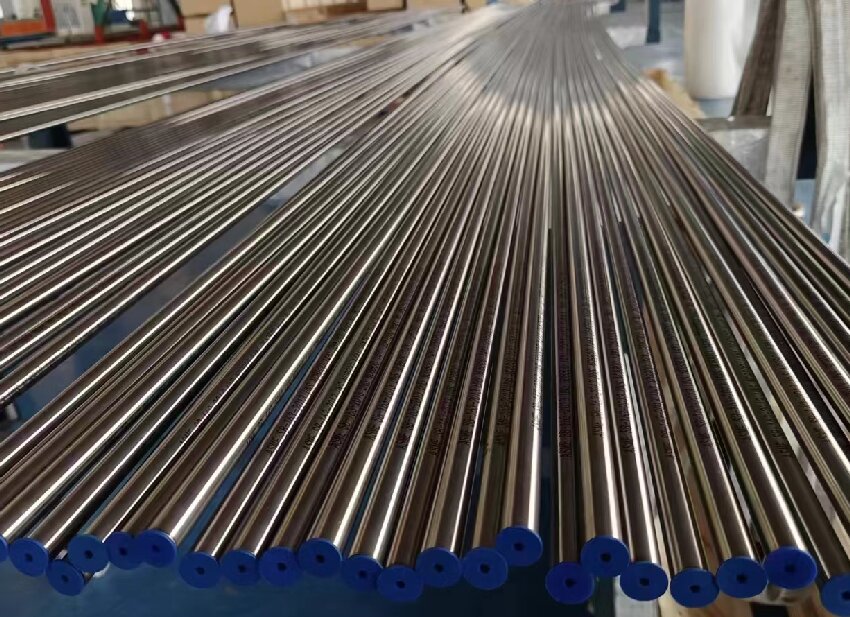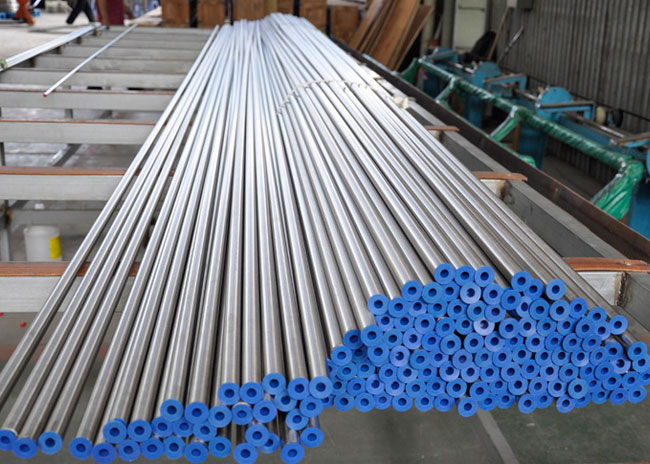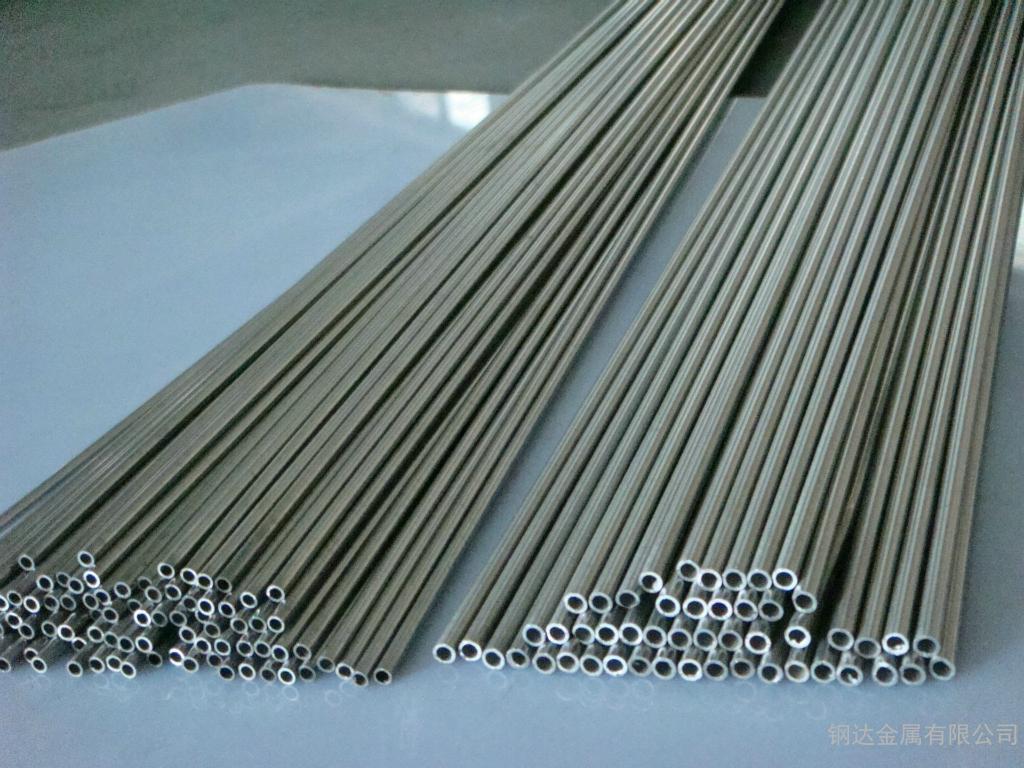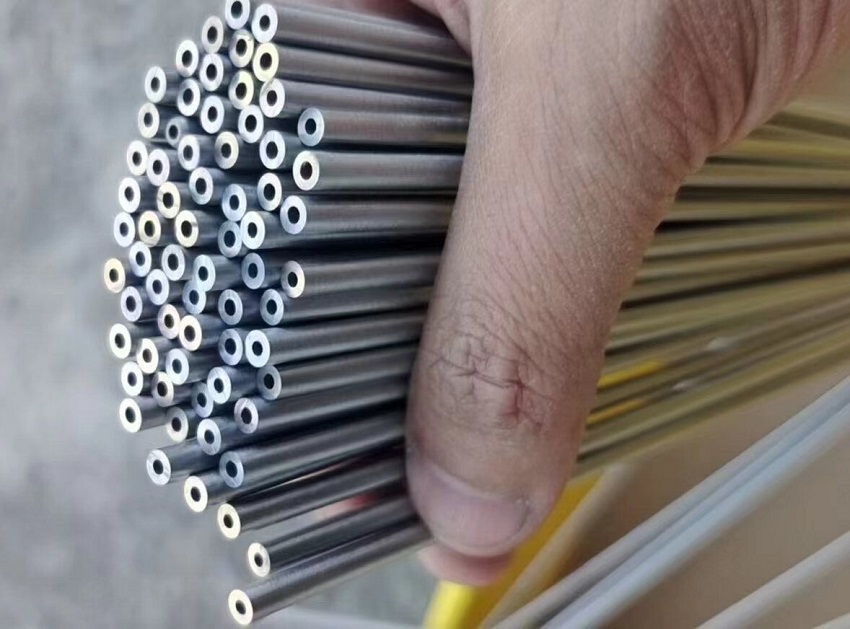NEWS CENTER
Duplex Stainless Steel Tubing
Introduce Duplex Stainless Steel Tubing
Duplex stainless steel Tubings exhibit excellent welding performance. Compared to ferritic and austenitic stainless steels, they do not suffer from the welding heat-affected zone seen in ferritic stainless steels, where serious grain coarsening reduces ductility significantly, nor are they as sensitive to welding heat cracks as austenitic stainless steels.
Due to its special advantages, duplex stainless steel is widely used in industrial sectors such as petrochemical equipment, seawater and wastewater treatment equipment, oil and gas Tubinglines, papermaking machinery, and has recently been researched for use in bridge load-bearing structures, showing promising development prospects.
Duplex stainless steel consists of equal parts of ferrite and austenite in its solid quenching structure, with the minimum content of each phase possibly reaching 30%.
1. Duplex Stainless Steel Tubing
2. Characteristics of Duplex Stainless Steel
3. Duplex Stainless Steel Tubing Classfication
Duplex Stainless Steel Tubing Introduction
Duplex stainless steel Tubings exhibit excellent welding performance. Compared to ferritic and austenitic stainless steels, they do not suffer from the welding heat-affected zone seen in ferritic stainless steels, where serious grain coarsening reduces ductility significantly, nor are they as sensitive to welding heat cracks as austenitic stainless steels.
Due to its special advantages, duplex stainless steel is widely used in industrial sectors such as petrochemical equipment, seawater and wastewater treatment equipment, oil and gas Tubinglines, papermaking machinery, and has recently been researched for use in bridge load-bearing structures, showing promising development prospects.
Duplex stainless steel consists of equal parts of ferrite and austenite in its solid quenching structure, with the minimum content of each phase possibly reaching 30%.
Safety Limits and Requirements for Duplex Stainless Steel Tubings
1. It is necessary to control the phase ratio, with the most suitable ratio being approximately equal parts of ferrite and austenite. The quantity of either phase should not exceed 65%, ensuring optimal comprehensive performance. Imbalanced phase proportions, such as an excessive amount of ferrite phase, can easily lead to the formation of single-phase ferrite in the weld heat-affected zone (HAZ), making it sensitive to stress corrosion cracking in certain media.
2. Understanding the phase transformation law of duplex stainless steel Tubings and familiarizing oneself with the TTT (Time-Temperature-Transformation) and CCT (Continuous Cooling Transformation) curves of each steel grade are key to correctly guiding the development of heat treatment and hot forming processes for duplex stainless steel. Precipitation of brittle phases in duplex stainless steel is more sensitive than in austenitic stainless steel.
3. The continuous service temperature range of duplex stainless steel Tubings is -50 to 250°C, with the lower limit determined by the steels brittle transition temperature and the upper limit restricted by 475°C embrittlement. The upper temperature limit should not exceed 300°C.
4. Duplex stainless steel Tubings need to be rapidly cooled after solid solution treatment. Slow cooling can cause precipitation of brittle phases, leading to decreased toughness of the steel, especially its resistance to local corrosion.
5. The lower temperature limit for hot working and hot forming of high-chromium-molybdenum duplex stainless steel Tubings should not be lower than 950°C; for super duplex stainless steel, it should not be lower than 980°C; for low-chromium-molybdenum duplex stainless steel, it should not be lower than 900°C. This is to avoid surface cracking caused by the precipitation of brittle phases during processing.
6. The stress relief treatment commonly used for austenitic stainless steel (650-800°C) should not be used for duplex stainless steel. Solid solution annealing treatment is generally adopted. When conducting overall stress relief treatment at 600-650°C after overlaying duplex stainless steel on low-alloy steel surfaces, consideration must be given to the decrease in toughness and corrosion resistance, especially the decrease in resistance to local corrosion. Heating time within this temperature range should be minimized. Similar considerations should be made for heat treatment of composite plates of low-alloy steel and duplex stainless steel.
7. It is necessary to be familiar with the welding laws of duplex stainless steel Tubings and not simply apply the welding techniques used for austenitic stainless steel. The safe use of duplex stainless steel equipment is closely related to the correct mastery of the steels welding process, as equipment failure is often related to welding. Key factors include controlling line energy and interpass temperature, as well as selecting appropriate welding materials. Maintaining the necessary austenite quantity in the weld joint, particularly in the welding HAZ, is crucial for ensuring that the welded joint has the same performance as the base material.
8. When selecting duplex stainless steel for use in different corrosion environments, it is important to note that the steels corrosion resistance is always relative. Although duplex stainless steel has better resistance to local corrosion, each specific grade has an applicable range of conditions, including temperature, pressure, medium concentration, pH value, etc., which need to be carefully considered. Much of the corrosion test data obtained from literature and manuals are results of laboratory tests, which may differ from actual engineering conditions. Therefore, careful selection is required, and if necessary, corrosion tests in the actual medium or field tests under simulated conditions should be conducted.
Characteristics of Duplex Stainless Steel Tubing
Due to the characteristics of its two-phase structure and through proper control of chemical composition and heat treatment processes, duplex stainless steel combines the advantages of ferritic stainless steel and austenitic stainless steel.
Advantages of Duplex Stainless Steel Compared to Austenitic Stainless Steel Tubing
1. The yield strength of duplex stainless steel is more than twice that of common austenitic stainless steel, and it has sufficient ductility for forming needs. Using duplex stainless steel to manufacture tanks or pressure vessels can reduce the wall thickness by 30-50% compared to commonly used austenitic stainless steel, which helps reduce costs.
2. It has excellent stress corrosion cracking resistance. Even the lowest alloy-containing duplex stainless steels have higher stress corrosion cracking resistance than austenitic stainless steels, especially in chloride ion environments. Stress corrosion cracking is a prominent problem that ordinary austenitic stainless steels struggle to address.
3. In many media, the corrosion resistance of the most commonly used 2205 duplex stainless steel is superior to that of ordinary 316L austenitic stainless steel, while super duplex stainless steel has extremely high corrosion resistance. In some media, such as acetic acid and formic acid, it can even replace high-alloy austenitic stainless steels or even corrosion-resistant alloys.
4. It has good resistance to local corrosion. Compared with austenitic stainless steels with similar alloy contents, its resistance to wear corrosion and fatigue corrosion is superior to austenitic stainless steels.
5. Its coefficient of linear expansion is lower than that of austenitic stainless steel and closer to that of carbon steel, making it suitable for connection with carbon steel, which is of great engineering significance, such as producing composite plates or linings.
6. Under both dynamic and static loading conditions, it has higher energy absorption capacity than austenitic stainless steel. This makes duplex stainless steel advantageous for structural components to cope with sudden accidents such as impacts and explosions, with practical application value.
Disadvantages of Duplex Stainless Steel Compared to Austenitic Stainless Steel Tubing
1. Its universality and versatility in applications are not as good as austenitic stainless steel. For example, its use temperature must be controlled below 250°C.
2. Its ductility is lower than austenitic stainless steel, and its cold and hot working processes and forming properties are not as good as austenitic stainless steel.
3. There is a middle-temperature brittleness zone, which requires strict control of heat treatment and welding procedures to avoid the appearance of harmful phases that can damage performance.
Advantages of Duplex Stainless Steel Compared to Ferritic Stainless Steel Tubing
1. Its comprehensive mechanical properties are better than those of ferritic stainless steel, especially in terms of ductility, and it is not as sensitive to brittleness as ferritic stainless steel.
2. Apart from stress corrosion resistance, its resistance to local corrosion is superior to that of ferritic stainless steel in all aspects.
3. Its cold working and cold forming properties are much better than those of ferritic stainless steel.
4. Its welding performance is also much better than that of ferritic stainless steel. Preheating before welding is generally not required, and post-weld heat treatment is not required.
5. Its application range is wider than that of ferritic stainless steel.
Disadvantages of Duplex Stainless Steel Compared to Ferritic Stainless Steel Tubing
1. It has a higher alloy element content and a relatively higher price compared to ferritic stainless steel, which generally does not contain nickel.
Duplex stainless steel tubing categorized:
1. Low Alloy Type
Representative Grade: UNS S32304
Chemical Composition: 23% Chromium, 4% Nickel, 0.1% Nitrogen
Features: Does not contain molybdenum, PREN (Pitting Resistance Equivalent Number) value of 24-25. Mainly used as a substitute for AISI 304 or 316, with good stress corrosion resistance.
2. Medium Alloy Type
Representative Grade: UNS S31803
Chemical Composition: 22% Chromium, 5% Nickel, 3% Molybdenum, 0.15% Nitrogen
Features: PREN value of 32-33, corrosion resistance between AISI 316L and 6%Mo+N austenitic stainless steels.
3. High Alloy Type
Representative Grade: UNS S32550
Chemical Composition: 25% Chromium, 6% Nickel, 3% Molybdenum, 2% Copper, 0.2% Nitrogen
Features: PREN value of 38-39, corrosion resistance higher than 22% Chromium duplex stainless steels.
4. Super Duplex Stainless Steel Type
Representative Grade: UNS S32750
Chemical Composition: 25% Chromium, 7% Nickel, 3.7% Molybdenum, 0.3% Nitrogen (sometimes containing tungsten and copper)
Features: PREN value greater than 40, suitable for harsh environments, with excellent corrosion resistance and mechanical properties, comparable to super austenitic stainless steels.

Duplex Stainless Steel Tubing
请输入搜索关键字
确定






